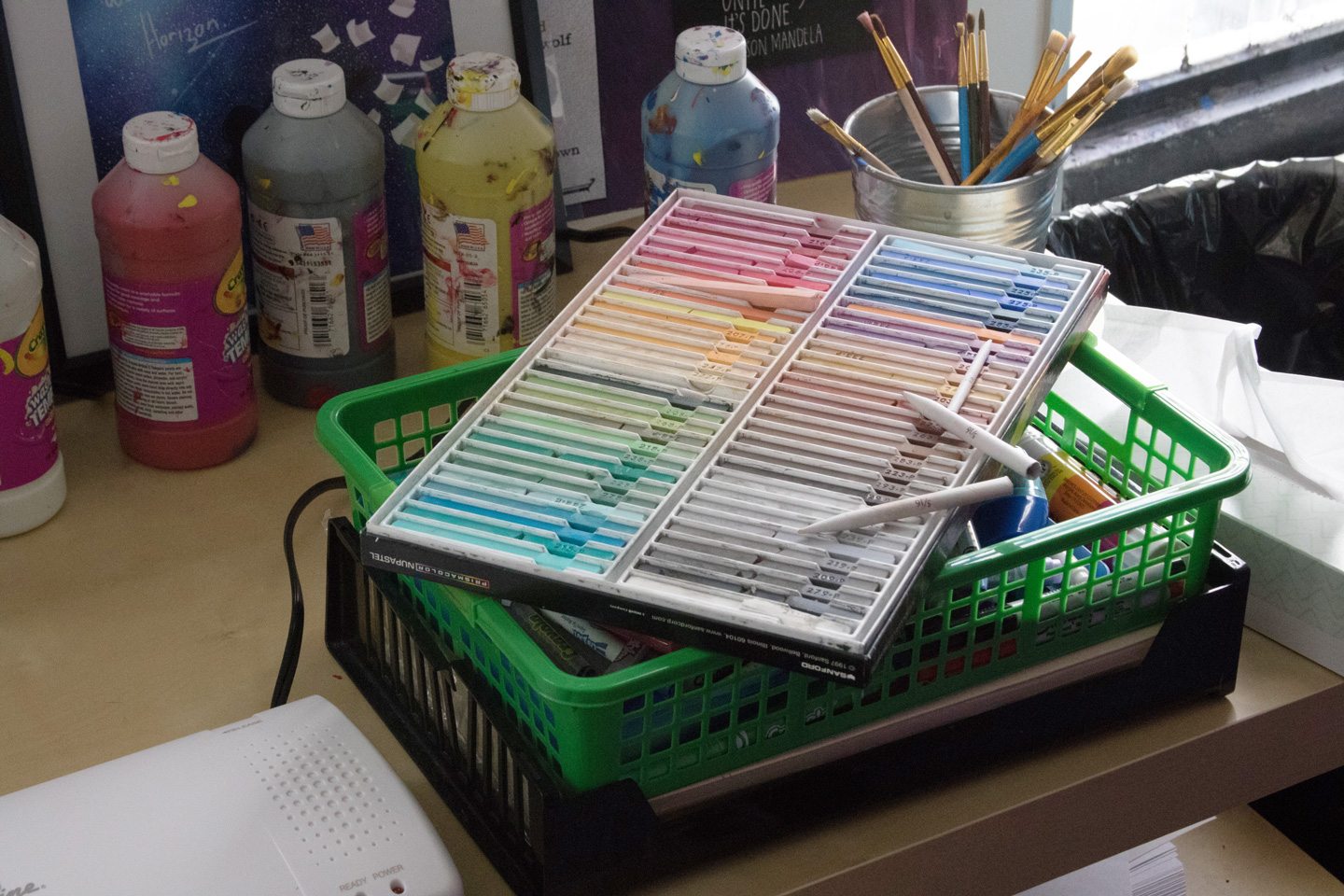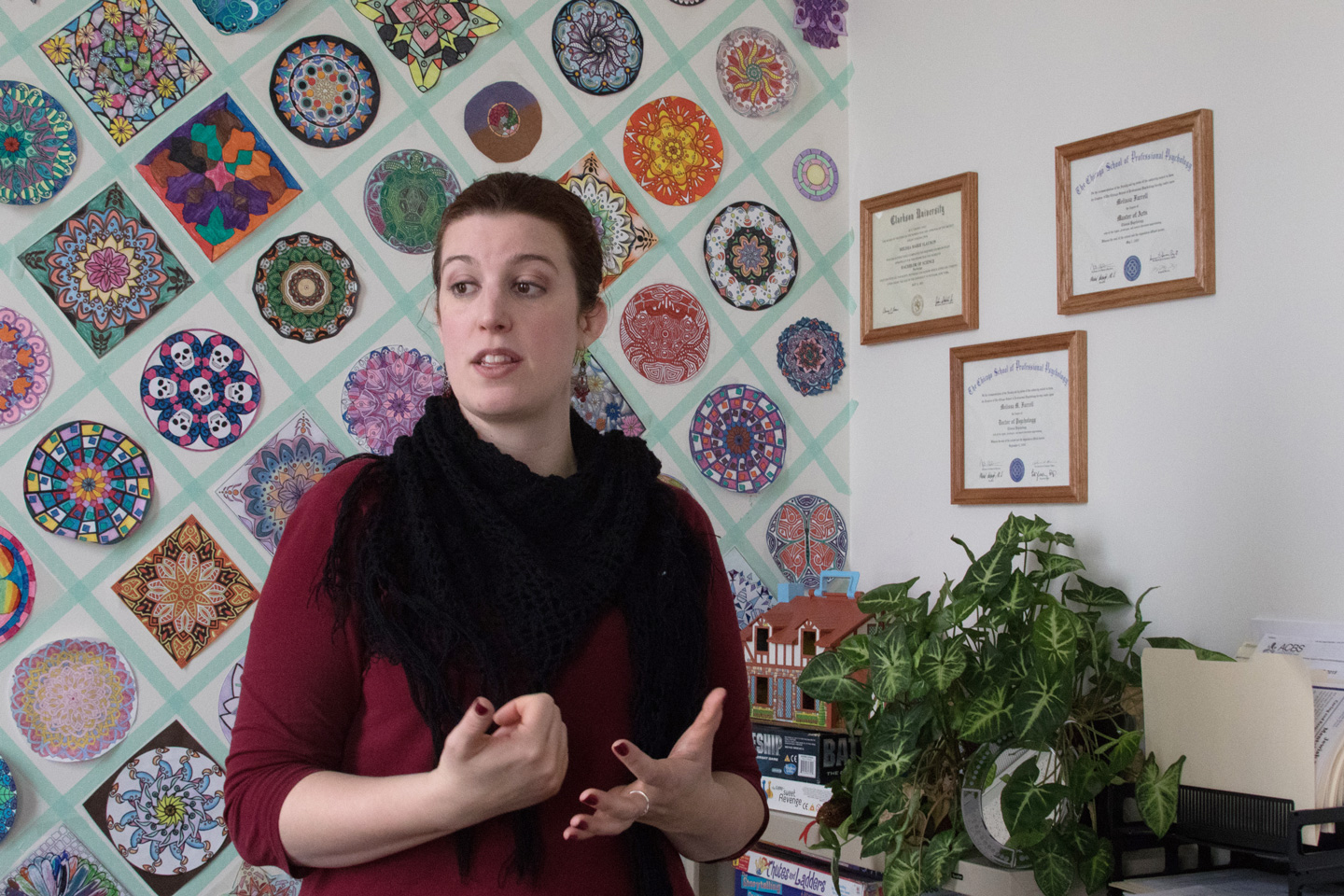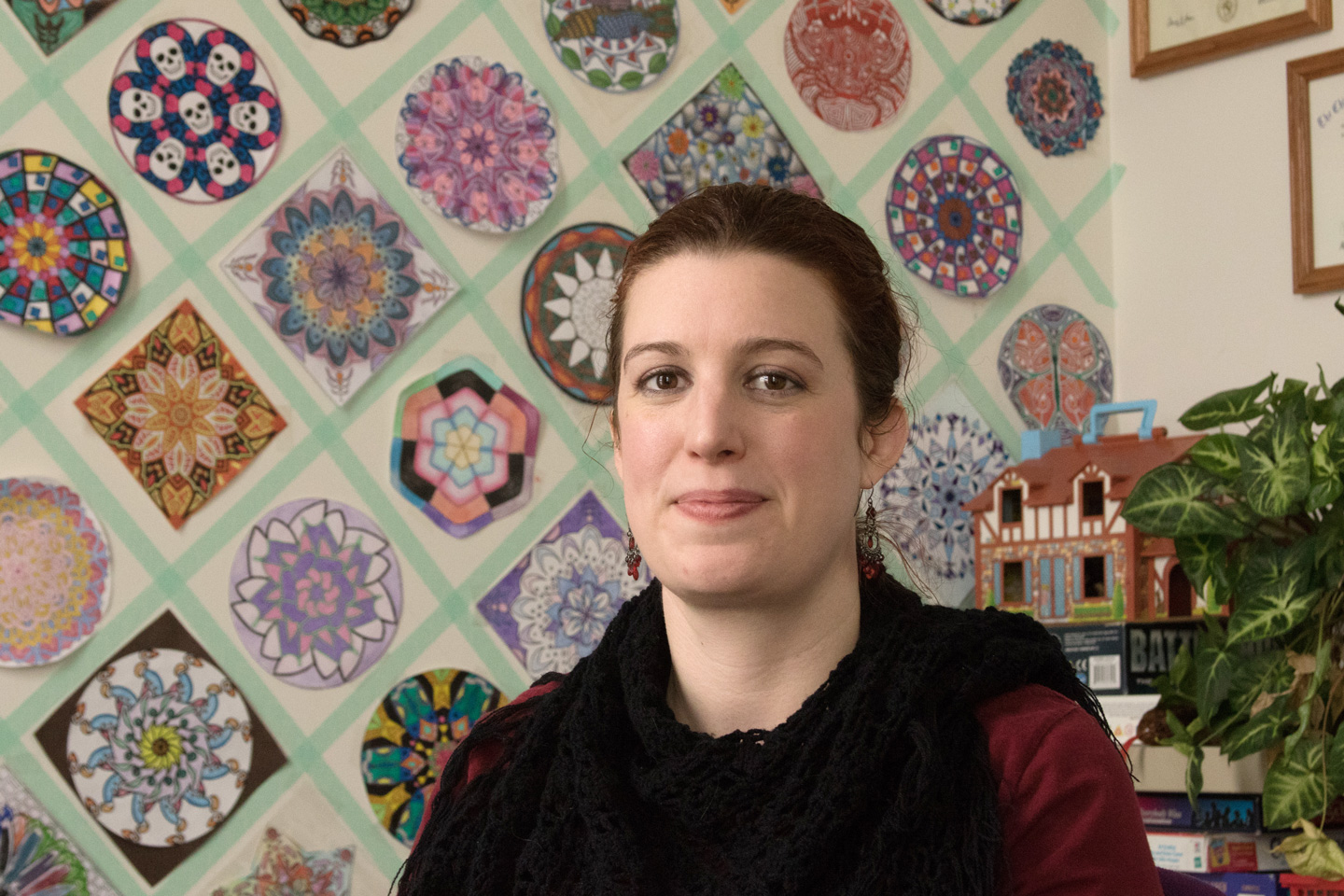Mindfulness. Think it’s a trendy term? Think again.
Being “mindful” — in an active state of open attention to the present – can actually change the chemistry of your brain.
There is nothing nutty or crunchy about the science here: studies show that living fully in the moment for periods of even 3 to 5 minutes at a time can actually benefit areas of the brain that govern complex thinking, pain tolerance, self-awareness and emotions.
Mindfulness makes sense . . . when you think about it. But for those of us living under the stress of day to day life and its constant distractions, being mindful can take a little practice.
Curious to learn more about the ways mindfulness works with a trained clinician, I made an appointment with Melissa Farrell, a Doctor of Psychology and therapist who uses a variety of mindfulness techniques in her practice at Jewish Family Service.
“It’s not the corner office,” says Melissa as we round the long corridor in Suite 405 of the Crowne Building in Oak Park, “but I’ve got the finger-painted windows.” Melissa’s office is a study in mindful creativity, decorated with the artwork of her clients. Most prominently displayed is a work in progress — the “wall quilt” of intricately colored paper mandalas.
Why coloring for adults and children alike? And why mandalas?
“Psychologists have known about the therapy of coloring for years,” explains Melissa. “I began using coloring in my practice in 2008 after reading an article about how coloring intricate and repetitive patterns – such as those found in the designs of mandalas – can help people achieve a state of mindfulness and reduce anxiety. The mandala, itself, is regarded in some religions as a spiritual and ritual symbol of the universe. Coloring a mandala becomes a powerful statement of completion.

“In therapy, I always offer my clients the option of coloring while we’re talking. I find it often helps the process – because it furnishes just enough distraction from a difficult or emotional conversation to manage the feelings that can come up and otherwise be overwhelming. Coloring also is subtly instructive. It affirms that everyone has a creative ability to contribute. I tell my clients – just look at my wall and see what you have done.”
Though Melissa’s clients range in age from four years to seniors, her primary range is from school age children to young adults. As a JFS specialist in psychological and cognitive testing, she works with students, parents and teachers in assessing behavioral disorders, autism and mood disorders that lead to issues in school.
“Often those issues come down to anxiety and depression at various stages of childhood or adolescent development. Figuring out who you are during adolescence can be extremely challenging, especially if there are other things going on in the home like divorce or a death in the family.”
Asked what changes, if any, she’s seen in attitudes or awareness of mental illness among children in our schools, Melissa answers, “I think that the increases in diagnosis today – especially in the kids I see on the autism spectrum and in transgender kids – are more of an identification issue. These kids were always out there. They were always the way they were. The difference now is that we are recognizing, assisting and supporting them in ways that we weren’t before.”
We need to do more
Melissa asserts that education is the door leading the way to helping kids learn and talk about common mental health concerns such as anxiety, depression and substance abuse. “The Jewish schools specifically where I work doing psychological testing have started to open up a dialogue about kids with different educational needs based on their mental health. That’s been helpful, but we need to do more. We all talk about suicide prevention, and yet, as a society, we stigmatize depression. Talking to kids about their feelings and how to identify and manage their feeling from a very early age is so very important.

“My own daughter is five, and I like to say she ‘feels all the feelings.’ She’s very intense and I see that with a lot of my anxious clients. My daughter knows that I am a ‘Doctor of Feelings.’ That’s what we call it. I am a Doctor of Feelings when people can’t handle their feelings or their feelings are out of control. I help them with their feelings. I use mindfulness with my own daughter when she becomes scared or upset.
“For example, my daughter had her appendix out last year, and the other night she started crying at bedtime, saying she was scared thinking about the hospital again. So I used some simple techniques of mindfulness with her. I call it the “Noticing Game.” “We’re in your bedroom, what are some of the things in your bedroom, I ask her. And she answers: my dollhouse, my closet, my vanity. Okay, now tell me how your bed feels to you right now. She answers, my pillows are soft, my blanket is warm . . . and that mental exercise was enough to ground her, to shift her attention from those things that scared her and bring her back to the present moment where she is tucked in and safe in her bed.
“Biological anxiety has a genetic basis; my father had it, I have it and it’s likely that my daughter will have it. But as I stress to my clients, there are ways we can intervene and strategies we can learn so that anxiety doesn’t overwhelm and overtake our lives and we can move in what I like to call our ‘value direction’ —to reach our goal despite having anxiety or depression, or whatever else is troubling us.”
Dr. Farrell’s tips for parents dealing with their children’s emotions
- Remain calm. If you become upset because your child is upset, you won’t help the situation.
- Help the child breathe. Take a deep breath with them, that’s the first step to trying to communicate what’s wrong.
- Help them find the words. Depending on their age, you may need to label feelings for them. Use feeling words. The words we use are very important in helping our children tackle their emotions.
- Then get into techniques. Find a technique that you like. You can use coloring as a strategy. Or puzzles. There is a plethora of things online that you can make that can work for you.
And how does Dr. Melissa Farrell declutter her brain, “de-stress” and deal with her own anxiety and run-away emotions?
“I run! I did a half marathon last year. For me, exercise is the best and most natural therapy to metabolize cortisol, a stress hormone in the body, and release endorphins which are natural anti-depressants. Being a mom of two small children and working full time – the things that come with that – I constantly feel that push to be doing more than one thing at a time. When I’m running, I can be mindful, just doing one thing: running. I don’t need to be doing anything else. I encourage my clients to carve out time for themselves, whether it’s running or reading or just doing one thing, just for themselves.
“And learn to play! As a culture we’ve stopped valuing playtime. It’s like we decided play and work and two completely different things. That’s not true. Your mind is developing connections. Your synapses are firing and you are developing as a person, all the time.
“That’s what I love about my job – helping people find that power and presence of mind that we call ‘mindfulness.’ And if you need evidence that it works, well, just look at the quilt wall in my office.”




